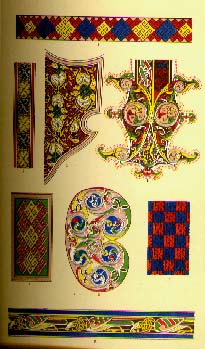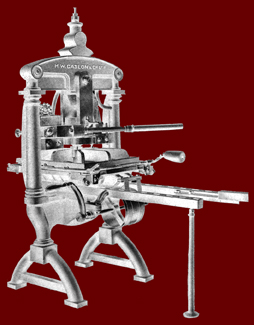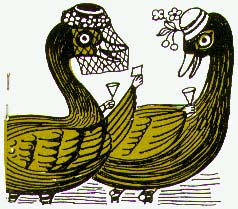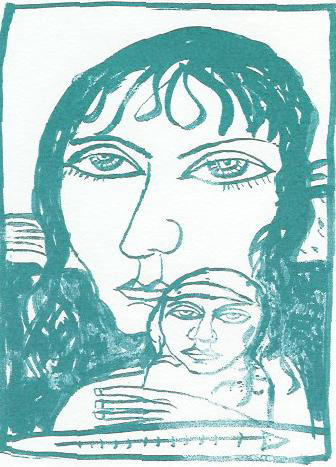THE LITHOGRAPHIC PROCESS
Alois Senefelder invented lithography around 1798. The process exploited three basic principals, one being that water and grease repel one another; that grease attracts grease and thirdly, that limestone has an affinity for water.
What this allowed artists and crafts people to do was to be able to draw directly onto a dry, flat, stone surface with a greasy ink or chalk. When water was later applied to that surface it was repelled by the grease but attracted to the bare stone. The image that had been drawn in ink attracted the greasy printing ink that was dabbed or rolled onto this surface while the surrounding damp areas repelled the ink. Quite simply the surface of the stone was divided into a greasy (ink) image and the damp background non-image area. When the damp area was dried ready for printing, this did not affect the image area, which remained intact ready to be transfered to the paper. This was called a planographic process as it was essentially a flat printing surface rather than an etched or engraved one. Senefelder first used the process to print and duplicate sheet music, but it was soon realised that it was a process that could be used for book illustrations, artist's prints, packaging, posters etc.
Early examples of artists using lithography may be found in the work of Delacroix and Gericault. Book and magazine illustration, in the nineteenth century, remained an area that continued to be dominated by wood engraving, but a great deal of ephemeral printing for industry was produced through lithography. However, there are some examples of lithography being used to produce sumptuous colour book illustrations. Among the most famous of these is The Grammar of Ornament by Owen Jones (1856). Digby Wyatt, who assisted Jones produced his own ornamental work called the Art of Illuminating in 1860 (see the illustration above).
Of all the artists who used lithography in the nineteenth century there were only a few who could really exploit the process. Among these were Daumier and Toulouse Lautrec. Metal plates gradually replaced the stones and this, combined with the photographic processes, precipitated the huge industrial printing boom of lithographic printing in the twentieth century. Lithography became the dominant printing process and wood engraving, in particular, and the craftspeople that practiced it suffered as a consequence.
Artists have continued to use both stones and metal plates, and anyone who has been fortunate enough to experience the process of printing, by using stone, will have appreciated the quality and flexibility of this medium at its very best.
In the UK the Curwen Press has been an important centre for the development of lithography. Many artists, such as John and Paul Nash and Henry Moore have had there work printed there. The press also pioneered the use of the printing of continuous tone images. Since the lithographic printmaking renaissance instigated by the Tamarind institute in USA, as well as other print workshops, many artists, such as Frank Stella, James Rosenquist, Jasper Johns have used lithography.
©Arvon Wellen 1997 - 2010
|
|
 |
|
|



